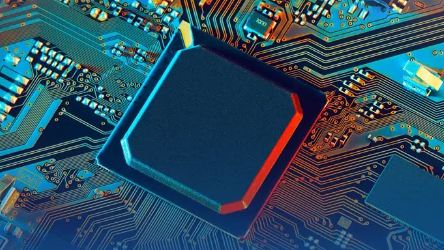What is a digital circuit? What is an analog circuit?
Analog circuits and digital circuits are two fundamental types of electronic circuits that serve different purposes in the world of electronics. Analog circuits are designed to process continuous signals, which means they can handle a wide range of values within a specific range. On the other hand, digital circuits are designed to process discrete signals, which means they can only work with specific values, typically represented by binary digits (0s and 1s). Digital circuits use logic gates and flip-flops to perform operations such as arithmetic, logic, and memory storage. Here is a detailed introduction to analog circuits vs digital circuits. Keep reading!

What is a digital circuit?
A circuit that uses digital signals to perform arithmetic operations and logical operations on digital quantities is called a digital circuit. Modern digital circuits are constructed from several digital integrated devices made using semiconductor processes. Logic gates are the basic units of digital logic circuits. Memory is a digital circuit used to store binary data.
What is an analog circuit?
Electronic circuits that process analog signals are called analog circuits. The focus of analog circuit research is the waveform changes of signals during processing and the impact of devices and circuits on signal waveforms, mainly using circuit analysis methods.
Analog circuits and digital circuits – what are the differences?
A digital circuit is a circuit that processes logic level signals. It is a circuit that uses digital signals to complete arithmetic operations and logical operations on digital quantities. On the whole, digital circuits are divided into two categories: combinational logic circuits and sequential logic circuits.
Digital circuits are developed on the basis of analog circuits. Their basis is current and voltage, but they are essentially different. The current and voltage of an analog circuit are constant during a cycle, while the current and voltage of a digital circuit are pulsating.
Analog circuits and digital circuits are also carriers of signal changes. In analog circuits, the amplification and reduction of signals in the circuit are achieved through the amplification characteristics of components, while in digital circuits, the transmission of signals is achieved through switching characteristics.
In analog circuits, the changes in voltage, current, frequency, and period are mutually restricted, while in digital circuits, the changes in voltage, current, frequency, and period are discrete. Analog circuits can work under large currents and high voltages, while digital circuits only work under small voltages and low currents with low power consumption to complete or generate stable control signals.
Analog circuits provide power to digital circuits and complete the execution of actuators. In analog circuits and digital circuits, signals are expressed differently. Operations that can be performed on analog signals, such as amplification, filtering, limiting, etc., can also be performed on digital signals.
Why are digital circuits more popular?
With the continuous development of electronic technology, digital circuits are used more and more widely, replacing analog circuits in many fields. The main reasons are:
①Digital circuits are easier to program using various algorithms, making their applications more flexible;
②Digital circuits can provide higher working speed;
③Using digital circuits, the range of digital information can be wider and the representation accuracy can be higher;
④Digital circuits can use embedded error correction systems;
⑤Digital circuits are easier to miniaturize than analog circuits, etc.
Applications of analog circuits and digital circuits
Analog and digital circuits have many applications in the field of electronic engineering. Here are some common applications
Analog circuit applications
Analog signal processing: Analog circuits can be used to process analog signals, such as audio, video, etc.
Power management: Analog circuits can be used to design and control power supplies, such as voltage regulators, switching power supplies, etc.
Communications: Analog circuits can be used to design and implement modems, radio frequency circuits, etc.
Sensor interface: Analog circuits can be used to design sensor interface circuits, such as amplifiers, filters, etc.
Control system: Analog circuits can be used in control systems such as temperature control, motor control, etc.
Digital circuit applications
Computer: Digital circuits are the core part of computers, including central processing units, memory, input and output interfaces, etc.
Communications: Digital circuits can be used to design and implement digital signal processing, modems, etc.
Control system: Digital circuits can be used to implement digital control systems, such as robot control, automation control, etc.
Embedded systems: Digital circuits can be used to design and implement embedded systems, such as smart homes, smart watches, etc.
Digital signal processing: Digital circuits can be used for digital signal processing, such as digital filters, fast Fourier transform, etc.
In general, analog circuits and digital circuits are widely used in various electronic equipment and systems, involving various fields, such as communications, computers, control systems, etc.
在线留言询价
- 一周热料
- 紧缺物料秒杀
| 型号 | 品牌 | 询价 |
|---|---|---|
| TL431ACLPR | Texas Instruments | |
| CDZVT2R20B | ROHM Semiconductor | |
| BD71847AMWV-E2 | ROHM Semiconductor | |
| MC33074DR2G | onsemi | |
| RB751G-40T2R | ROHM Semiconductor |
| 型号 | 品牌 | 抢购 |
|---|---|---|
| BP3621 | ROHM Semiconductor | |
| ESR03EZPJ151 | ROHM Semiconductor | |
| BU33JA2MNVX-CTL | ROHM Semiconductor | |
| TPS63050YFFR | Texas Instruments | |
| STM32F429IGT6 | STMicroelectronics | |
| IPZ40N04S5L4R8ATMA1 | Infineon Technologies |
- 周排行榜
- 月排行榜
AMEYA360公众号二维码
识别二维码,即可关注
























